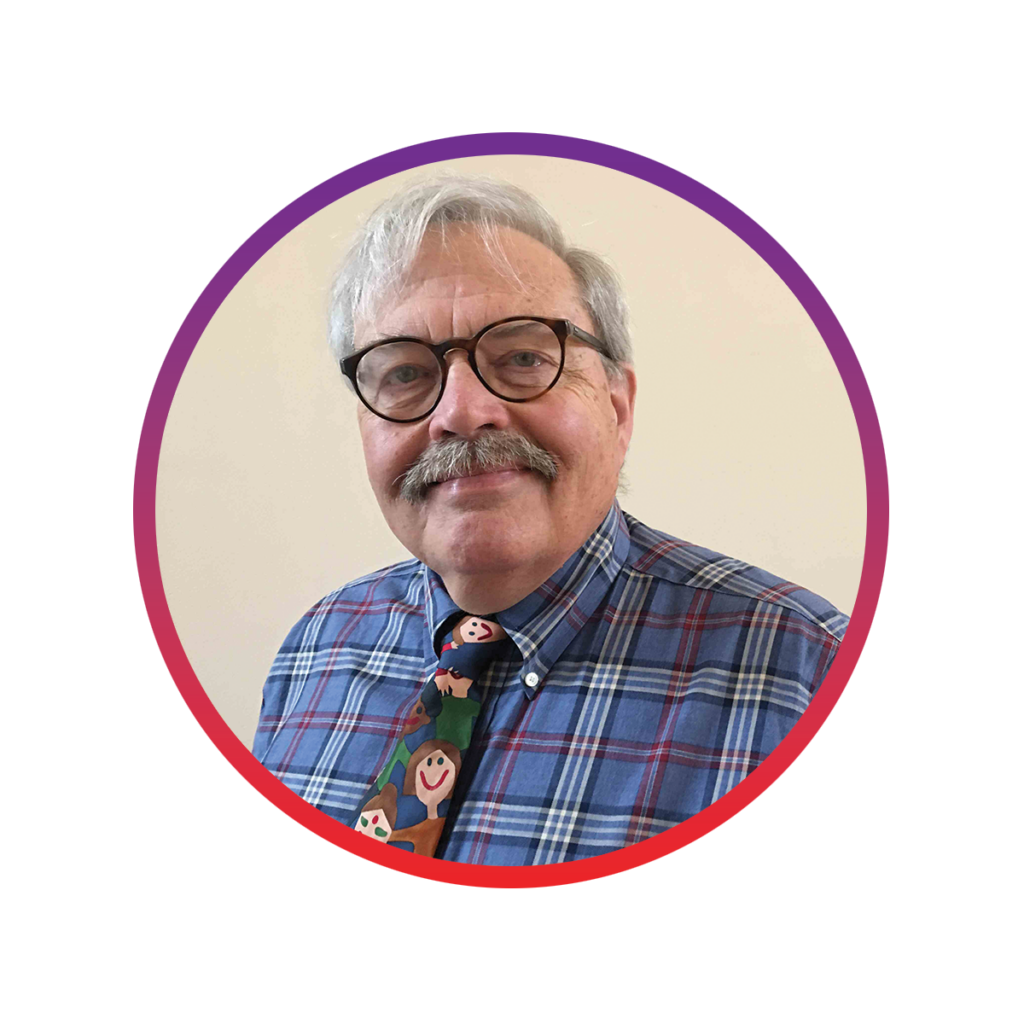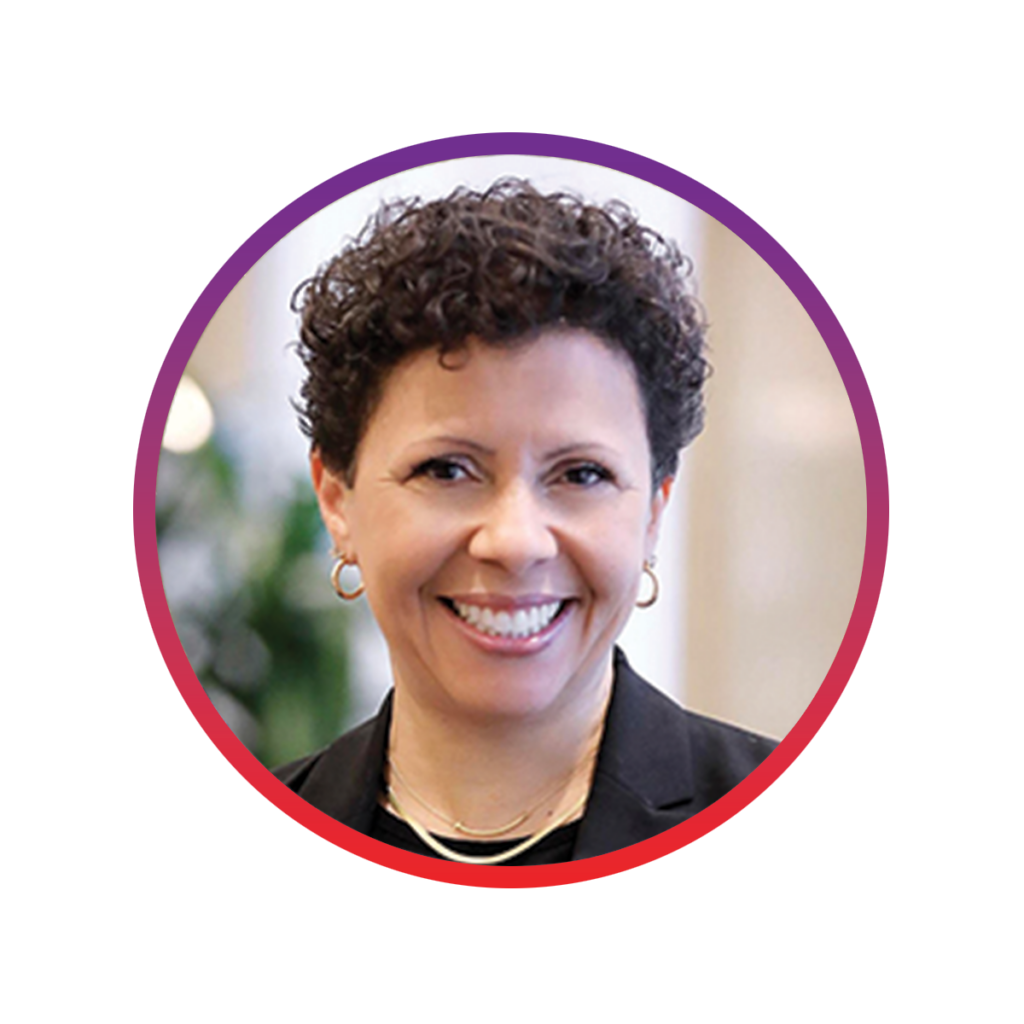In episode 76 of Teaching Channel Talks, we welcomed Jim Thompson, an instructional coach with five decades of experience in teaching and leadership positions.
If you weren’t able to listen in, now you can read through Wendy and Jim’s conversation as they dive into the present state of professional learning in education and explore how video coaching can have a transformative impact on fostering teacher growth.
Wendy: Jim, you bring 50 years of experience in education and you care not only about the students but also about the teachers and I can feel that in the way that you talk about the education space. Tell me a little bit about your background.
Jim: Well, sure. I was a classroom teacher first, and then I was a principal for 20 years, but the word principal came to us from the phrase principal teacher. 50 years ago, I was the 7th, 8th, and 12th-grade social studies teacher. Then I became a middle school social studies and reading teacher, and I didn’t have any courses in teaching reading so I quickly became friends with the reading teacher. I then became an elementary, self-contained teacher and that was my road to Damascus. I became a convert to elementary, I just loved teaching all the subjects which is something I never thought of I’d say.
After that, I became an administrator and spent 20 years as an elementary principal. I was actually my daughter’s elementary principal, She wrote her college essay on how I survived being the elementary principal’s daughter. Next, I taught a lot of college and that’s when I got the idea of instructional coaching. I started asking questions about what improvement looks like, what’s been done for us versus what’s been done to us, and that really brings me to our work today. Dr. Casey Kosiorek and I wrote a book, A Quick Guide To Video Coaching, and we really wanted to address how to take the fear out of using video.
Wendy: I’m grateful that you frame the question as what can we do for teachers? Because there have been a lot of initiatives that have been pushed into schools. There’s been a lot of top-down, organizational, or systematic programming. But the real issue is making sure that the teachers are their best selves so that they can bring the best out of the students and you’re addressing that through video, which was not an option that you had when you started. You started without any kind of coach or mentor!
Jim: Wendy, this gets dismal. When we did the research for the book we asked teachers a few questions. “Did you learn how to teach in teacher’s college?” 80% said no way.
“On a scale of 1 to 10, what was the quality of your student teaching experience?” The answers were all over the place—2s, 7s, 10s.
“On a scale of 1 to 10, what was the quality of your mentor when you first landed a job?” And again, it was all over the place.
“How much rehearsal time did you get with a lot of feedback before you went live with real kids?” That one, the teachers looked at me and said, “Rehearsal time. What is that?”
Then we talked to the beginning teachers, with all these needs, and we asked, “You weren’t evaluated with the same instrument that the teacher of the year and the district were evaluated, were you?” And they said, yes. What’s wrong with that? Everything!
Wendy: It’s not okay, we don’t treat our students this way. Why would we change the logic when trying to bring the best out of teachers? It doesn’t make sense.
Jim: It makes no sense and so I’m here in a polite way, to say I love you all, but the emperor isn’t wearing any clothes. We can do better. And I’m not throwing anyone under the bus, but I think this idea of video reflection and instructional coaching has some promise out there, so I’m thrilled that you’re inviting me to talk more about it.
Wendy: Yes, let’s talk more about it. I’d love to think about some benefits and look at the specific ways that coaching enhances professional development for teachers. How concrete can we get now?
Jim: Well, with much respect, I’d like to change the language from professional development to professional learning. As Jim Knight was recently quoted, “There is sadly a lot of professional development without much, if any, professional learning.” And that’s sad but true. You know, there’s a great book called “You’re Not Listening” by Kate Murphy and Kate asked the question, “Who really listens to you?” And sadly, in most cases there are just a couple of people and in many cases, nobody. I think that’s a good question to ask teachers, “Who is listening to you right now?” And I’ve asked them that question and they usually say say, well, not not many people.
The biggest learning driver is collective teacher efficacy. It’s when we build trust and when we enter into real dialogue. In a real partnership, I think we have teachers starting to really feel that they’re being listened to, that they’re being noticed, and then we get on this journey of collective teacher efficacy, that notion that we’re all in this together in this collective piece. This is what Judith Warren Little calls sharing craft knowledge because we need some outside speaker now and then, but we should really take a look at our talent and richness that are already here.
Wendy: The smart facilitators tee up the topic, and then they get out of the way. Teachers never have enough time to share ideas or have a show and tell with one another to talk about the successful approaches that are meeting the needs of different students. Instead, we have teachers in isolation, trying to figure things out on their own. What a waste!
Let’s talk about introducing video into a program and exploring how to set teachers up for video reflection and video coaching. We know that non-punitive, non-evaluative coaching is where we get the greatest growth. What can we learn about that?
Jim: Well, I love the question. I think we have to find common ground first and have those strong relationships built. Then we can sit down with people who we trust and who trust us, maybe buy them a cup of coffee and just listen to them a little bit. See if there’s an opportunity to ask if they’ll be the guinea pig for you. See if they’d be willing to video 8 minutes of their teaching, and they don’t have to show it to anybody. Then sit back down and have them talk to you after they reflect on that video. Make it a challenge that they need to identify one goal that would really advance student learning, and that’s all they have to do.
They do the video, reflect on it, and identify one goal that’s important to them. Not important to me, or the Superintendent of schools, or the Commissioner of Education, but important to them. When people, many times the first time, see their practice on video, it’s rocket fuel. It is clarity. And we will never, ever, ever get better unless we help people first identify where they are.
Wendy: Even if you don’t get everyone on day one, I suspect that there’s a take-up rate. As colleagues see the improvement in their neighboring teacher’s rooms and the confidence, it’s got to be catchy. So it may not have a 100% take-up rate on day one, but I think we need to commit to the long game and move at a pace that actually makes a difference instead of thinking we’re going to come in steamroller style.
Jim: So true. You know, the model of the Navy seals is, “Slow is smooth, and smooth, is fast.” I think that’s that’s what it takes, this real idea of partnership and trust. I’ve heard people say, “Well, we’re going to start doing video coaching and it’s going to be part of the evaluation.” And boy, that dog isn’t going to hunt. You cannot start out as an evaluative. You’ve got to build trust and show value to people.
Wendy: It’s baby steps. Can you help me think about some examples of specific goals that you’re aware of that teachers have set for themselves? What are people identifying as that specific goal that can improve student learning?
Jim: What a great question. We talked off camera a little bit about Doug Lemov and he spent a year of his life looking at this idea of ratio: the amount of time a teacher talks versus the amount of time a student talks. One of the prevalent things that comes up, and it’s a fun piece to coach to be blunt with you, is teachers reflect and realize they’re doing most of the talking, and most of the cognitive heavy lifting. I’ll hear teachers say, “I asked 14 questions and I answered every one of them!” or “I found out that the only way I give kids attention is when they’re naughty or when they misbehave, and I think they like it!” Teachers see the kids are misbehaving to get them to react, so now they have to figure out some ways to give kids attention from the positive side and it evolves and becomes a wonderful conversation.
Then in the coaching conference, after they’ve identified this goal, we ask on a scale of 1 to 10 where are you right now with that goal? And then, what would it be if it were a 10? What would you be doing differently? What would the students be doing differently?
Wendy: One of the questions that I think Jim Knight has to address on a regular basis is whether or not the teacher’s goals need to align with some district objective or outcome. I believe he says no, that the teacher’s goal is the teacher’s goal. But do you have thoughts about that?
Jim: I think you have to be honest upfront. When we start this, when we invite people on this journey and say that we’re going to trust them and it’s going to be their goal, it has to be their goal. I think we have to stay with that. But sometimes it’s good to remember what we stand for and if the teachers don’t have clarity on that, then I think those are important things to conjure up and talk about.
Wendy: I like leaving open the possibility that a teacher’s goals may exceed some benchmark that the district would set. When I hear districts saying we’d like to have 80% of our students doing X, I always think, well, what about the 20%? Don’t they matter? Why is 80% OK?
Jim: I agree with you, let’s talk just about engagement. Where are we right now with behavioral engagement, cognitive engagement, and social-emotional engagement? You know, I love this idea that Doug Lemov among many others brings up, this idea of a sense of belonging. When was the last time we took a gauge on the students’ sense of belonging? When was the last time we checked to see if they feel that they’ve been being heard? That they’ve been being listened to? I really believe that inviting teachers to this journey of video reflection and partnership coaching is a hallmark of this idea of belonging.
I don’t think anybody’s got one answer here, I don’t think they do. So I think we can find better answers when we share craft knowledge, but it’s tough to do classroom walkthroughs. They’re great, but they can be tough and and some teachers find it intimidating when an army of people come into the room. So instead, we can exchange videos.
Wendy: Love that you can control who you share the video with, too. You can upload something for self reflection and really see if what you believe about your teaching is playing out in your actions. That’s priceless! And then, maybe you share it with the trusted friend, and that’s that next circle out. Maybe you share with a with a coach or a team. There’s a lot of potential there.
You and I have talked a little bit about the current climate in education being somewhat problematic. What kinds of challenges are teachers facing and how does video coaching support overcoming obstacles and challenges in today’s climate?
Jim: Well, I think survey after survey asks teachers how satisfied they are, how empowered or supported they feel, and the results are not good. Then we look at the continued and growing national teacher shortage, people don’t want to go into this profession and when we recruit them, many don’t want to stay in it.
I don’t think there’s easy one answer here. I think the role of social media plays a part, the teachers and people in the schools are being attacked viciously online. Books are being banned in elementary libraries, the same books that I have for my own grandson. Then there’s active school shooting drills, and the post-pandemic trauma that is still continuing. There’s so much going on and I don’t think there are easy answers, but I believe we have to start by honoring those teachers. We have to ask, how can we best help you? What resources do you need to help you help students? And a lot of times, they’re not going to give us that answer right away. They’re going to talk, they want somebody to listen to them.
I think the first piece here is listening, really listening, and then hopefully it’s extending invitations to reflect with video, to partner with the coach, and a large part of coaching is listening. I don’t believe in having a huge set of questions ready to go in a coaching conference. Jim Knight and his new book, The Definitive Guide for Instructional Coaching, talks about the improv comedy. Do you know what the biggest skilled improv comedian needs? It’s listening, because once you listen then you can see where you need to go next. So, I believe there’s an art to coaching, but it’s an earned art with respect. It’s being there for people, it is not a promise that we’re going to turn everything around, but it’s kind of a note saying we notice you and and we really want to help you. Again, that’s why it’s so important to have this as confidential and non-evaluative.
Wendy: Let’s imagine you have some new teachers in front of you and they want to benefit from the decades of experience that you have in education. Can you offer three short pieces of advice to these new teachers?
Jim: Well, the first thing I would do is thank them and express my heartfelt gratitude because I believe that this is the most important profession in the world, all other professions rely on it. Then, number two, I’m not going to sugar coat it, but this isn’t going to be an easy journey. There are going to be bumps in the road and there are going to be tough times, but I believe that with your dedication and with help with others, because you cannot do this alone, we can make great advances for these children. Even if it’s not linear. and and it is not linear. Number three, I’d say you have to put the oxygen mask on yourself first and do not apologize for it.
You know, way back when I taught 12th grade sociology, we had a book that dates me. It was transactional analysis and the title of the book was called, I’m OK —You’re OK. If you’re not okay, then how else is anybody else going to be okay? If you get depressed or more challenging things come up, then go seek others, have a conversation. Don’t apologize. Don’t be embarrassed. Because we really need you. This is not easy work, but it is joyous work. These are not easy times, but they are times that I think together we can work through. That self help, that personal wellness, I think is really important.
Wendy: That sounds perfect, Jim Thompson. I hope that everybody gets a chance to read this conversation, share it with fellow educators, and makes recommendations about video coaching and goal setting that honors where we are in our profession while hinking all the way through to the learners that we’re responsible for. This is a good conversation, and I’m grateful to have had it.
This conversation has been edited for length and clarity, but you can listen to the full episode of Teaching Channel Talks and find accompanying learning resources here.
Our Guest

Jim Thompson is a proud grandfather, educator, instructional coach, and author with 50 years of experience working in various administrative and teaching roles. He has taught at elementary, middle school, and high school levels, as well as the college level. During his time in administration, Jim was a National Distinguished Principal and the New York State Elementary Principal of the Year for the National Association of Elementary School Principals (NAESP). After retiring from his role as executive director of the Genesee Valley Educational Partnership, he has been working as a consultant and video coach for educators. He also co-authored a book with Dr. Casey Kosiorek titled, A Quick Guide To Video Coaching.
Our Host

Dr. Wendy Amato is the Chief Academic Officer at Teaching Channel’s parent company, K12 Coalition. Wendy earned her Master’s in Education and Ph.D. in Curriculum and Instruction from the University of Virginia. She holds an MBA from James Madison University. Wendy began teaching in 1991, has served as a Middle School Administrator, and still teaches at UVA’s School of Education. She has delivered teacher professional development workshops and student leadership workshops in the US and internationally. Wendy and her family live near Charlottesville, Virginia.
Resources for Continued Learning
Learn more from Jim in his book with Dr. Casey Kosiorek, A Quick Guide To Video Coaching.
During the podcast, Jim references these resources related to professional learning and teacher growth:
- John Hattie: Collective Teacher Efficacy
- Harvard University’s Best Foot Forward Project
- Building Ratio: Training Students to Think and Learn for Themselves, Kolby Atchison
- The Definitive Guide to Instructional Coaching: Seven Factors for Success, Jim Knight
- You’re Not Listening, Kate Murphy
- Teach Like a Champion, Doug Lemov
- I’m OK — You’re OK, Thomas Harris







